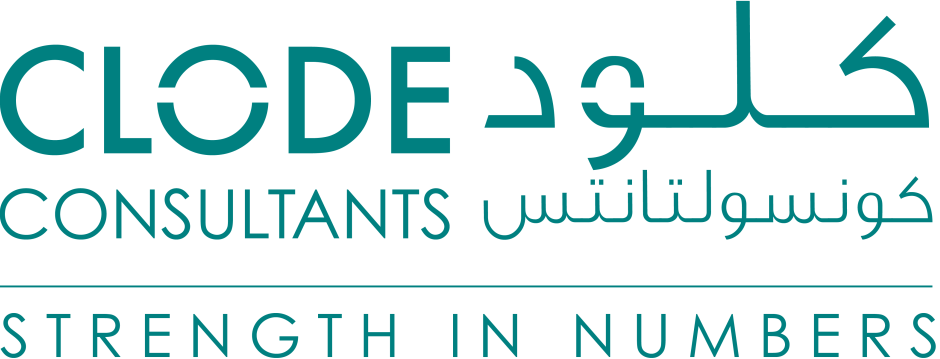Fundamentals
FUNDAMENTALS
FCSC DIPLOMA PROFESSIONAL PROFILE 1:
Synopses
FUNDAMENTALS OF OFFICIAL STATISTICS
FCSC Diploma Module 1.1
FCSC DIPLOMA
Statistics for managers
• What we talk about when we talk about statistics - a smorgasbord of websites and e-news where the presence of statistics is implicit
• Statistics in our day to day lives and in the life of an organisation - reference to a number of situations where we may speak about statistics, but where many questions can arise
• Why statistics became so important in the last decade - A virtual tour of management situations grounded in statistics
• Official statistics and statistical offices - the main fields of official statistics and their role in modern society; the role of national and international organisations within the framework of official statistics
• Statistics, lies, ambiguities, and misuse of statistics - fundamental lessons about real mistakes, manipulations, levity, and carelessness
• The statistician's raw material - types of variable, classifications, metadata, the need for an international common language
• Bar charts, histograms, and other forms of graphical representation - describing and simplifying masses of data graphically
• Overview of data visualisation - understanding the role of graphical representation
• Some standard statistical tools - average, variance, correlation, and regression - tools arising from intuition and practical needs, their interpretation, and limitations
• Some important economic statistics - inflation, concentration, product, and unemployment
• The two main kinds of statistics - descriptive and inductive - international examples
• Data collection - surveys, administrative sources, and big data - the limitations, advantages, and disadvantages of different data sources and data collection methods
• The role of sampling and surveys in statistics - what is true and what is false with sample surveys, sampling, and estimation
• Data science and big data in the world of official statistics - how data science is changing the profile of official statistics professionals
• Reliability and accuracy of statistical information - understanding the limitations of statistical information and interpreting the most important accuracy measures
• Future trends in official statistics - modern statistical areas, concepts, methods, and applications
FCSC Diploma Module 1.2
Management of statistical systems
• Statistical systems - statistical information needs, the role of official statistics, organisation and functioning of the national statistical system, the European statistical system, and international statistical system
• Concepts and statistical classifications - statistical harmonisation and international comparability, and the interaction between classifications and statistical dissemination structures
• Statistical sources - types of statistical units, using central business registers, combining data from different sources
• Statistical operations - methods and modes of data collection in statistical systems, frequency and celerity (swiftness of movement), start and maintenance of statistical operations, and statistics quality control
• Dissemination of statistics - creation and exploitation of statistical databases, publications and statistical dissemination, statistical confidentiality, and interaction between producers and users of statistics
FCSC Diploma Module 1.3
Data visualisation
• Introduction to data visualisation - storytelling and communication, and including data in a story
• Data visualisation step by step - the five steps in storytelling, and conflict and resolution
• Prepare for an audience - types of audience, and the participation of an audience
• Visual graphics - before aesthetics, lines-bars-dots-pies, legends and labels, colours, and software for visual graphics
• Data visualisation tips - plots sequence, global versus detailed picture, and simplicity and clarity
• Data visualisation insights - data importance for the audience, keeping the audience engaged, presenting from the beginning, and starting with an anecdote but ending with the data
• Data visualisation ethics - dangers of data manipulation, and how to be an ethical data storyteller
FCSC Diploma Module 1.4
Introduction to data sources and data collection methodologies
• Introduction to data collection methodologies
• The collection of data with surveys
• Planning the steps of the data collection process
• Sampling designs
• Target populations and sampling frames
• Sources of error in statistical operations
• Methods and modes of data collection methodologies
• Design of questionnaires to complement data collection methodologies
• The collection of data with administrative sources
• Statistics based on administrative information
• The nature of administrative data
• The transfer of administrative information into statistical information,
• Joint use of data from administrative sources and statistical surveys
• Data linkage and integration
• Evaluation of the quality of administrative data
• Protection of privacy and confidentiality
Fundamentals
FUNDAMENTALS
PROFILE 1:
Synopses
FUNDAMENTALS OF OFFICIAL STATISTICS
FCSC Diploma Module 1.1
Statistics for managers
• What we talk about when we talk about statistics - a smorgasbord of websites and e-news where the presence of statistics is implicit
• Statistics in our day to day lives and in the life of an organisation - reference to a number of situations where we may speak about statistics, but where many questions can arise
• Why statistics became so important in the last decade - A virtual tour of management situations grounded in statistics
• Official statistics and statistical offices - the main fields of official statistics and their role in modern society; the role of national and international organisations within the framework of official statistics
• Statistics, lies, ambiguities, and misuse of statistics - fundamental lessons about real mistakes, manipulations, levity, and carelessness
• The statistician's raw material - types of variable, classifications, metadata, the need for an international common language
• Bar charts, histograms, and other forms of graphical representation - describing and simplifying masses of data graphically
• Overview of data visualisation - understanding the role of graphical representation
• Some standard statistical tools - average, variance, correlation, and regression - tools arising from intuition and practical needs, their interpretation, and limitations
• Some important economic statistics - inflation, concentration, product, and unemployment
• The two main kinds of statistics - descriptive and inductive - international examples
• Data collection - surveys, administrative sources, and big data - the limitations, advantages, and disadvantages of different data sources and data collection methods
• The role of sampling and surveys in statistics - what is true and what is false with sample surveys, sampling, and estimation
• Data science and big data in the world of official statistics - how data science is changing the profile of official statistics professionals
• Reliability and accuracy of statistical information - understanding the limitations of statistical information and interpreting the most important accuracy measures
• Future trends in official statistics - modern statistical areas, concepts, methods, and applications
FCSC Diploma Module 1.2
Management of statistical systems
• Statistical systems - statistical information needs, the role of official statistics, organisation and functioning of the national statistical system, the European statistical system, and international statistical system
• Concepts and statistical classifications - statistical harmonisation and international comparability, and the interaction between classifications and statistical dissemination structures
• Statistical sources - types of statistical units, using central business registers, combining data from different sources
• Statistical operations - methods and modes of data collection in statistical systems, frequency and celerity (swiftness of movement), start and maintenance of statistical operations, and statistics quality control
• Dissemination of statistics - creation and exploitation of statistical databases, publications and statistical dissemination, statistical confidentiality, and interaction between producers and users of statistics
FCSC Diploma Module 1.3
Data visualisation
• Introduction to data visualisation - storytelling and communication, and including data in a story
• Data visualisation step by step - the five steps in storytelling, and conflict and resolution
• Prepare for an audience - types of audience, and the participation of an audience
• Visual graphics - before aesthetics, lines-bars-dots-pies, legends and labels, colours, and software for visual graphics
• Data visualisation tips - plots sequence, global versus detailed picture, and simplicity and clarity
• Data visualisation insights - data importance for the audience, keeping the audience engaged, presenting from the beginning, and starting with an anecdote but ending with the data
• Data visualisation ethics - dangers of data manipulation, and how to be an ethical data storyteller
FCSC Diploma Module 1.4
Introduction to data sources and data collection methodologies
• Introduction to data collection methodologies
• The collection of data with surveys
• Planning the steps of the data collection process
• Sampling designs
• Target populations and sampling frames
• Sources of error in statistical operations
• Methods and modes of data collection methodologies
• Design of questionnaires to complement data collection methodologies
• The collection of data with administrative sources
• Statistics based on administrative information
• The nature of administrative data
• The transfer of administrative information into statistical information,
• Joint use of data from administrative sources and statistical surveys
• Data linkage and integration
• Evaluation of the quality of administrative data
• Protection of privacy and confidentiality









